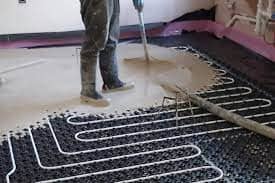When it comes to purchasing a property, there are many things to consider and the process can feel overwhelming, particularly if you are a first time buyer. We have broken down the process into five steps below to provide an overview.
Step one: Choose your conveyancer
The first step in the process is to choose your conveyancer. So you’ve found a property and you’ve decided to take the plunge? Now you need to instruct a solicitor or conveyancer. The conveyancer will be your legal representative through the process.
It is important to choose an experienced professional as you will be relying on them to deal with any issues that may arise during the process, and their expertise could mean they will see these potential issues coming. They will deal with the seller’s solicitor directly and will receive a contract pack from them. This is the documentation that details the conditions of the sale. Included in the documentation will be the purchase price, the date by which completion of the sale must take place and the value of the deposit you will need to pay.
You can find a conveyancer through a specialist such as Sam Conveyancing and https://www.clc-uk.org/consumers/find-a-licensed-conveyancer/
Step two: Searches and property enquiries
This is a key stage to be completed before the sale is finalised. You may have enquiries about the property or the sale, and now is the time to raise them. The conveyancer will also arrange the relevant property searches on your behalf.
These searches are performed in order to highlight any potential issues with the property that you should be aware of. The conveyancer will also look into the title of the property at this stage and contact the seller’s solicitor with any queries relating to their findings.
Step three: Signing and exchanging contracts
You are now getting closer to the big day, and will be required to sign the contract to commit to the purchase. Signing the contract means you are bound to pay the seller the specific price you agreed upon. In return, the seller is bound by the terms of the contract to transfer the property over to you. Once both parties have signed and the contract has been returned to the seller’s solicitor, they will exchange the contracts on your behalf. At this stage, the sale is legally binding and to change your mind now would be costly. So make sure to understand the conditions of the sale and ask any questions first!
Step four: Sale completion
After the exchange of contracts has taken place, there is a short period of time which has been specified in order to complete the final elements of the sale. During the completion phase, you will transfer the funds (via your solicitor) to the seller and following that, become the legal owner of the property.
Step five: Post completion
The hard bit is now out of the way, but there are a few other tasks to take care of. Stamp duty will be paid, again, via your solicitor. They will also contact HM Land Registry to register you as the new owner of the property, which is a step that must be completed within 30 days post-completion of the sale.
Buying a home is a big step and one of the most stressful life changes, so make sure you’re protected by choosing the best conveyancer for the job and asking any questions upfront.





